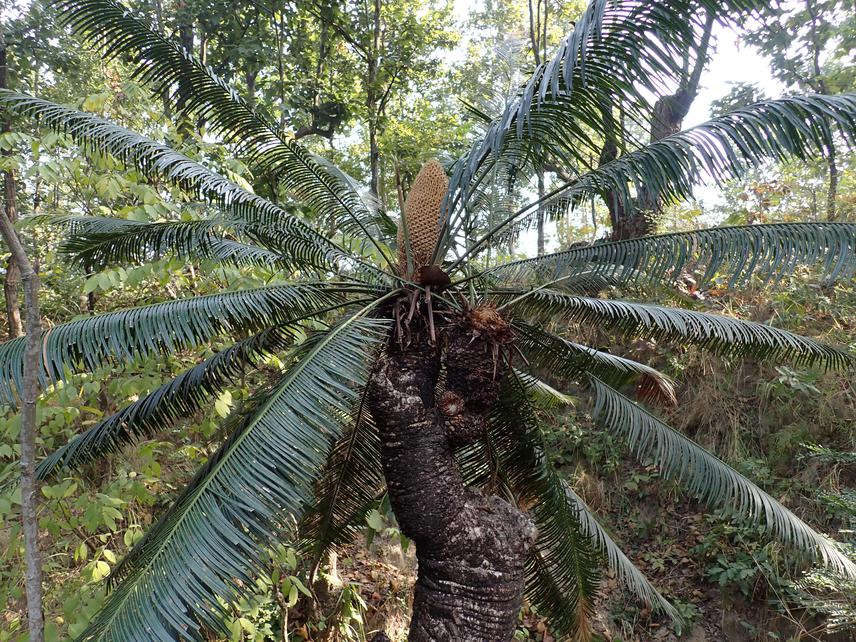YouTube video featuring the project.
Basu Dev Poudel
Cycas pectinata is of high conservation priority due to its immense scientific and conservation value, stemming from its rarity and long evolutionary history. Cited as a 'living fossil' tree, it is distributed within the tropical regions of the eastern Himalayas However, there is limited data available on wild Cycas pectinata populations and their distribution, especially in Nepal. Despite being the only species of Cycas found in Nepal, there is a dearth of research specifically focusing on the population and ecology of this species in the country. The species faces numerous threats, including infrastructure development such as roads, hydropower projects, and electric transmission lines. However, the collection of Cycas from the wild for food, medicine, and horticulture are the major threats. Due to a significant decline in its global population by an estimated 30% over the past 90 years, as well as a decrease in habitat quality, the plant is categorized under ‘VU’ in the IUCN Red List and CITES Appendix II category. Nevertheless, the population status and threats of this species are largely not known in Nepal.

Cycas Pectinata (Male cone) at Jalthal forest Jhapa district Nepal. ©Yogendra Bikram Poudel.
The present study will be focused mainly on Jhapa and Morang districts, in Koshi province, Nepal. They are situated outside the protected areas and listed as Important Plant Areas (IPAs) and Important Bird Areas (IBAs) of Nepal. This project aims to assess the current status, distribution, and existing threats of the Cycas population in eastern Nepal by applying population assessment, distribution mapping, questionnaire survey, conservation workshops, and awareness programs. In addition, the specific threats will be focusing on plant parts used, habitat quality, local population size, presence of invasive species, grazing, construction of roads, transmission lines and buildings, deforestation, habitat fragmentation, and user groups. The outcomes of this project will provide baseline data of Cycas through ecological surveys and the involvement of the local community, the project will be able to categorize the existing threats, demonstrate habitat or site-specific threats. Which is crucial for a long-term conservation action plan.
Header: Interaction and group discussion with forest guards and community forest user group. ©Ravindra.